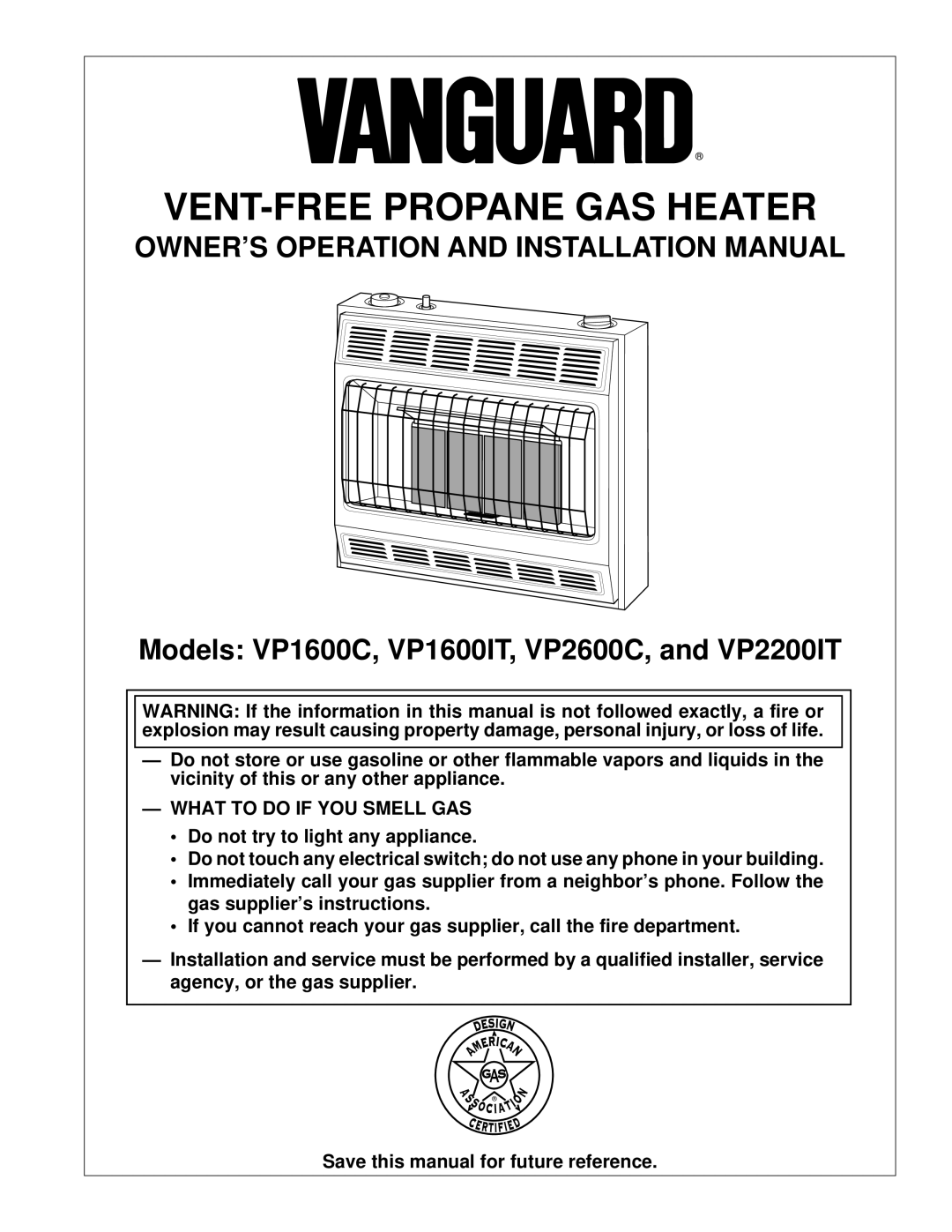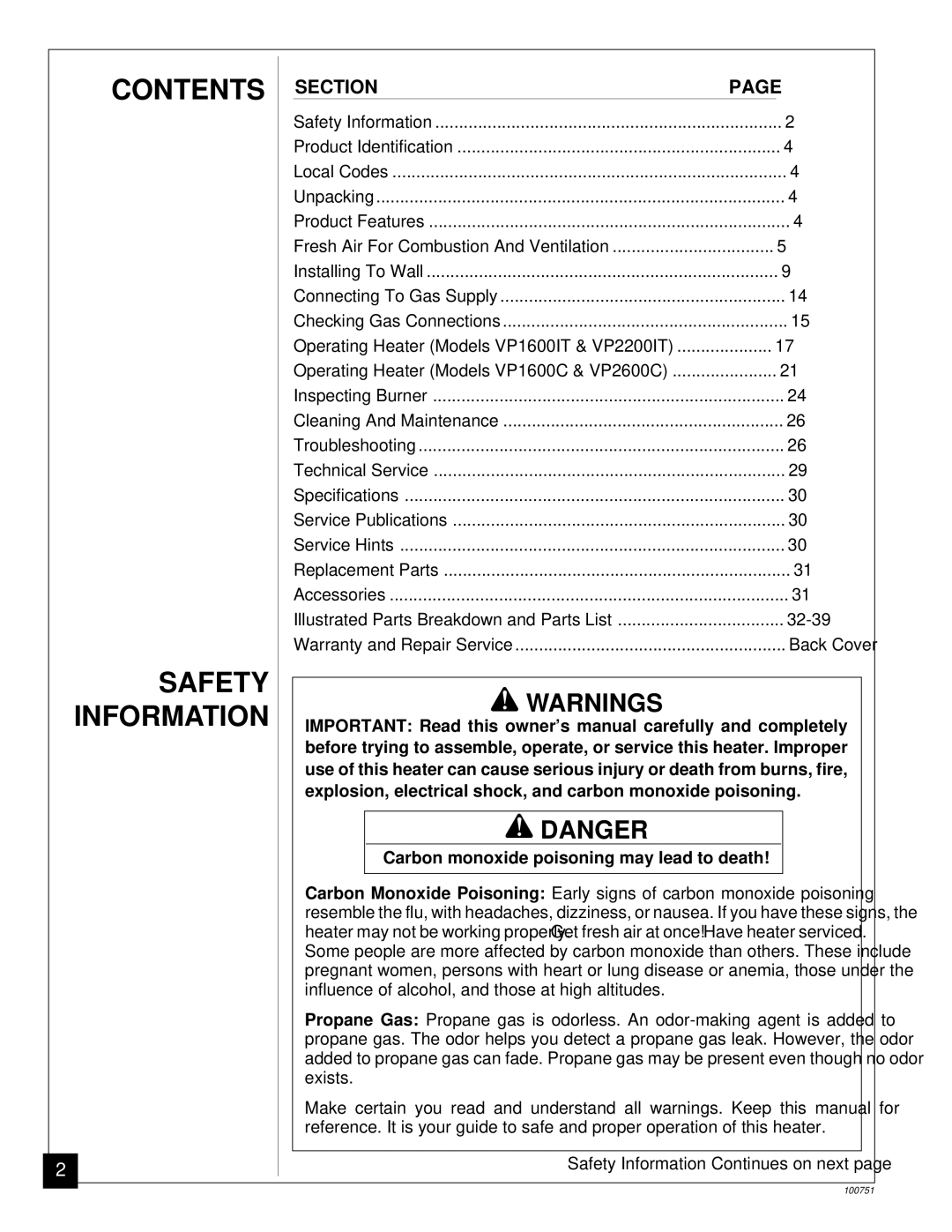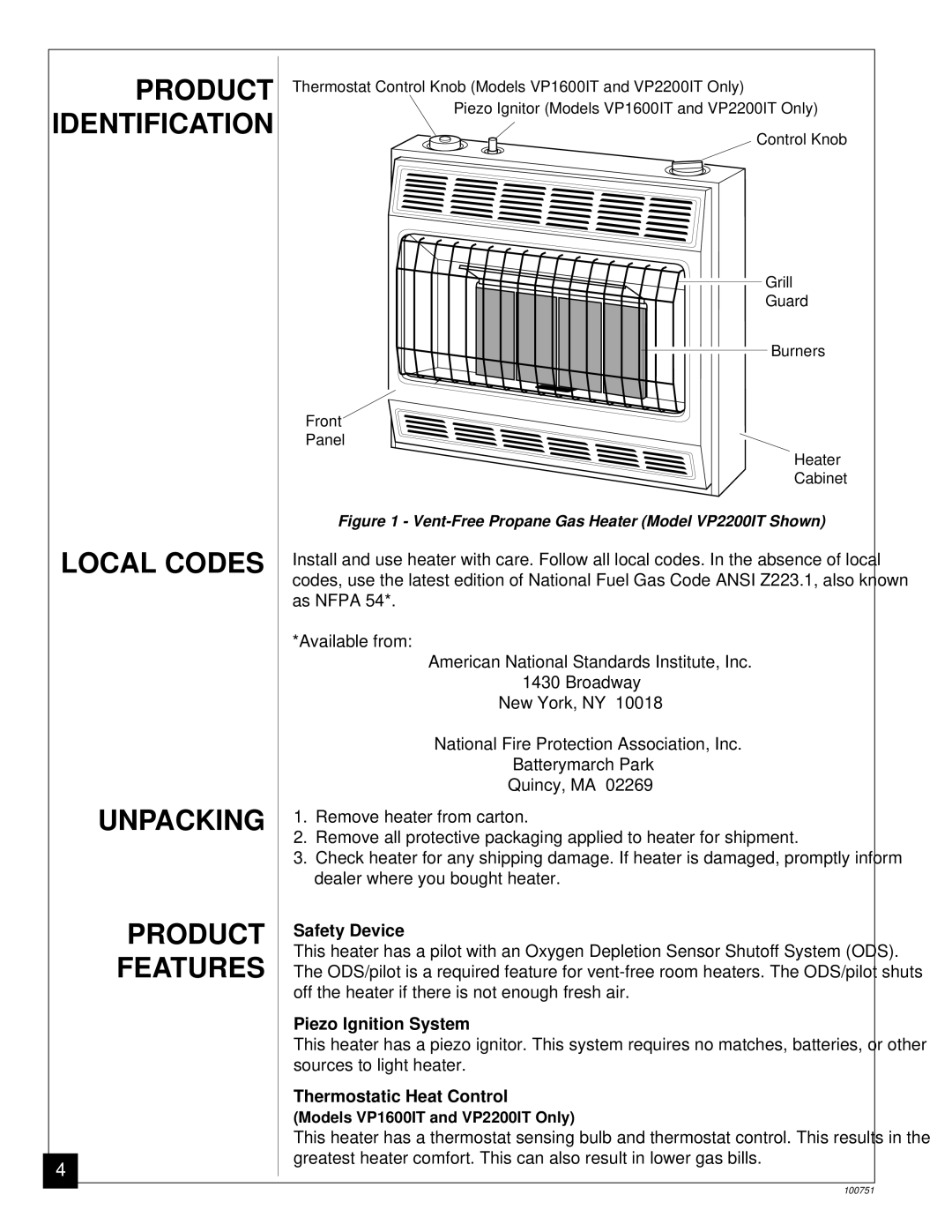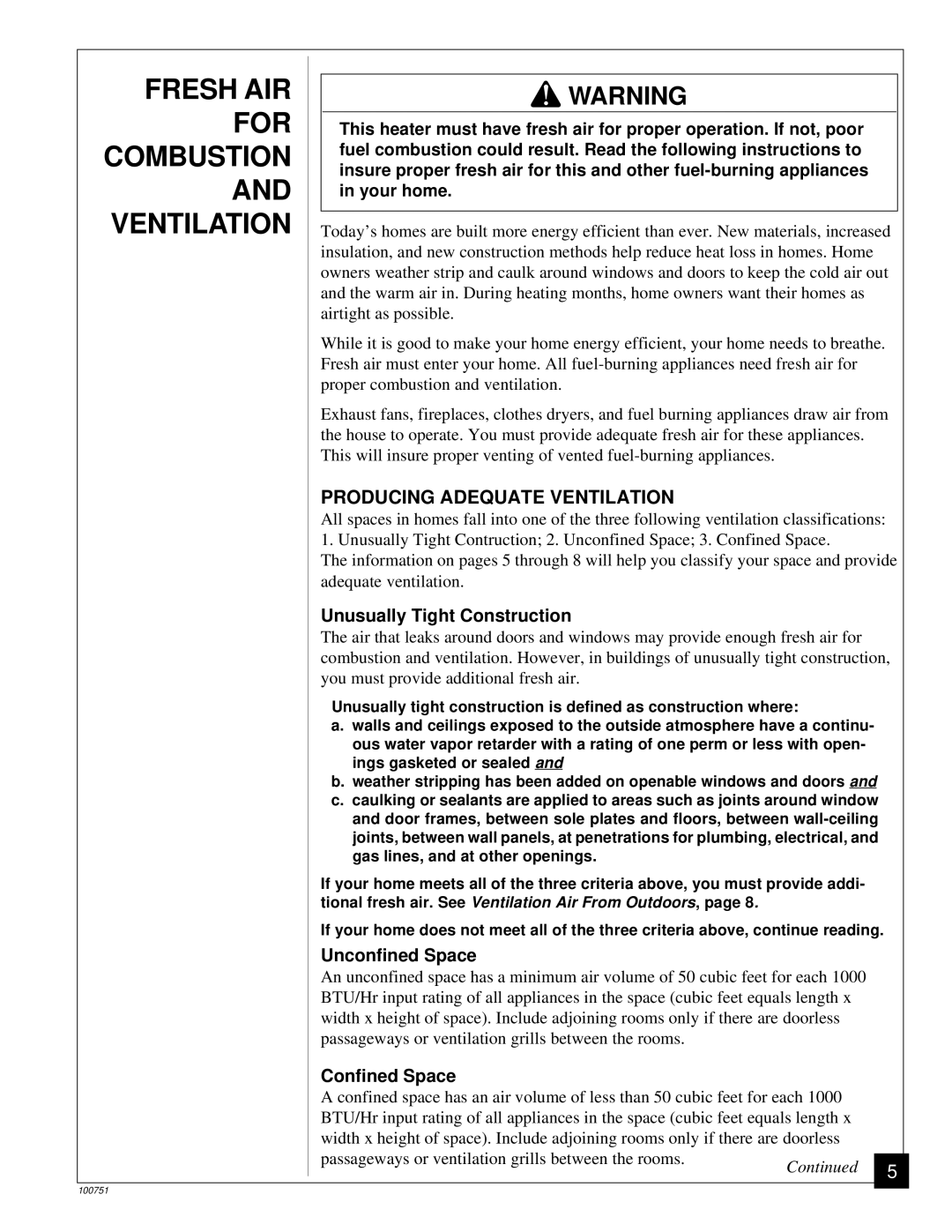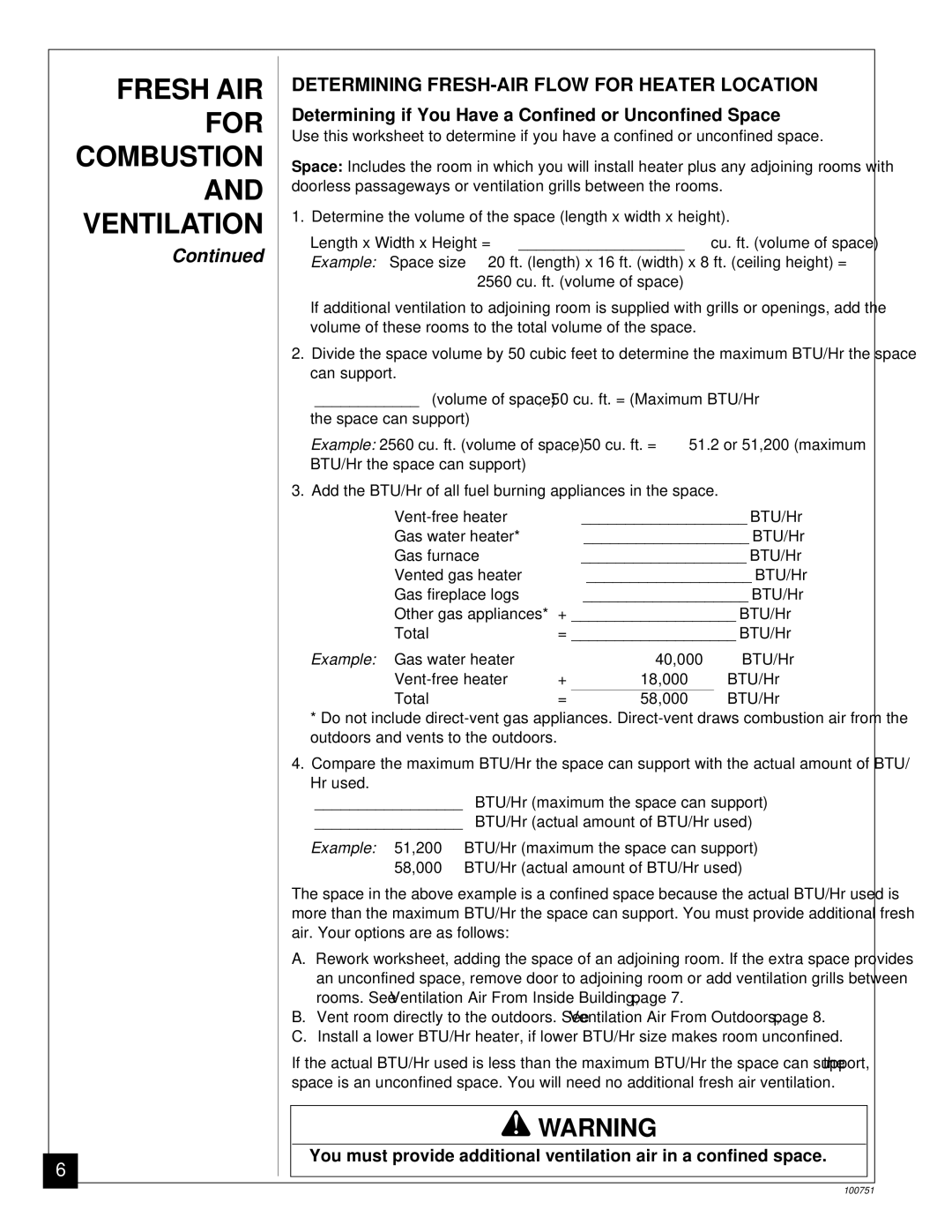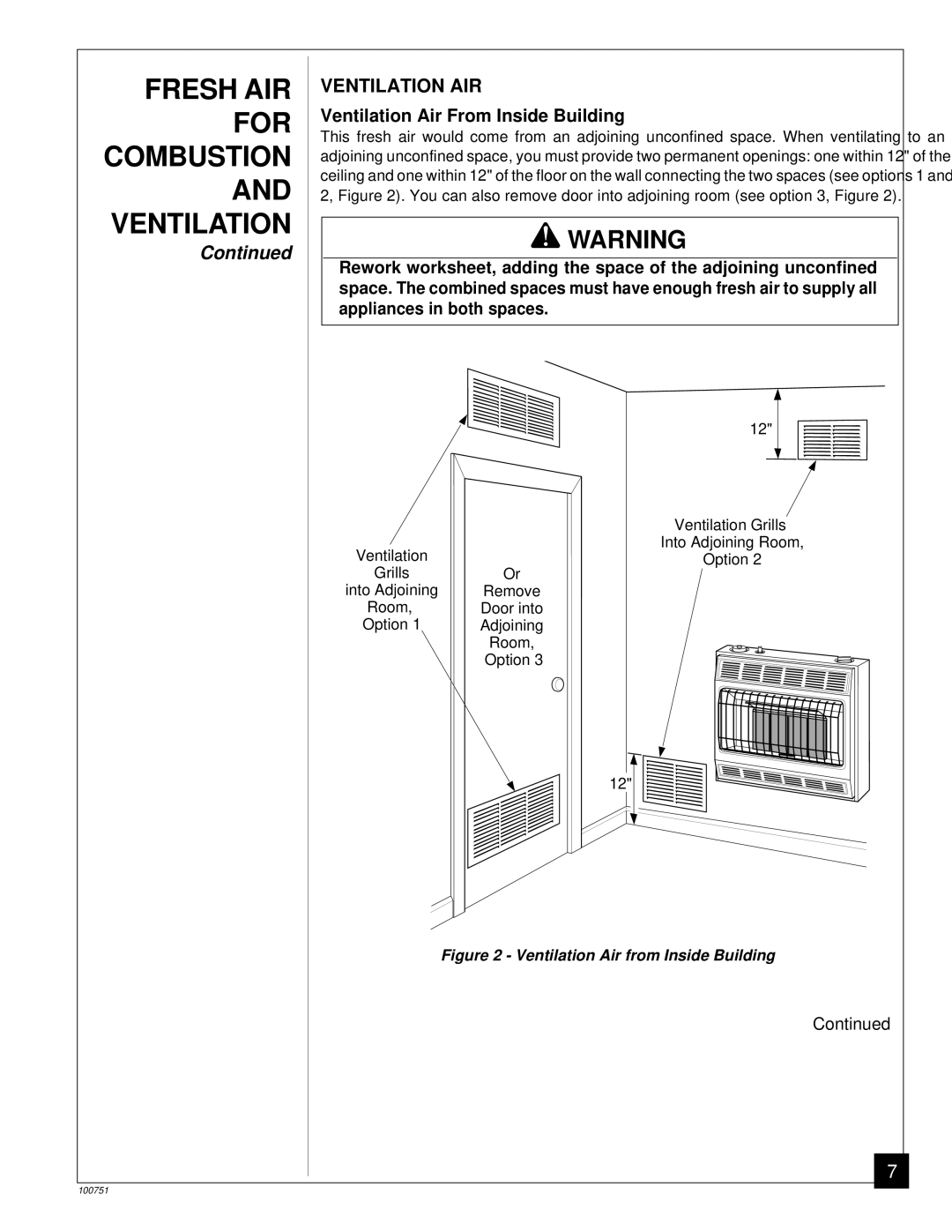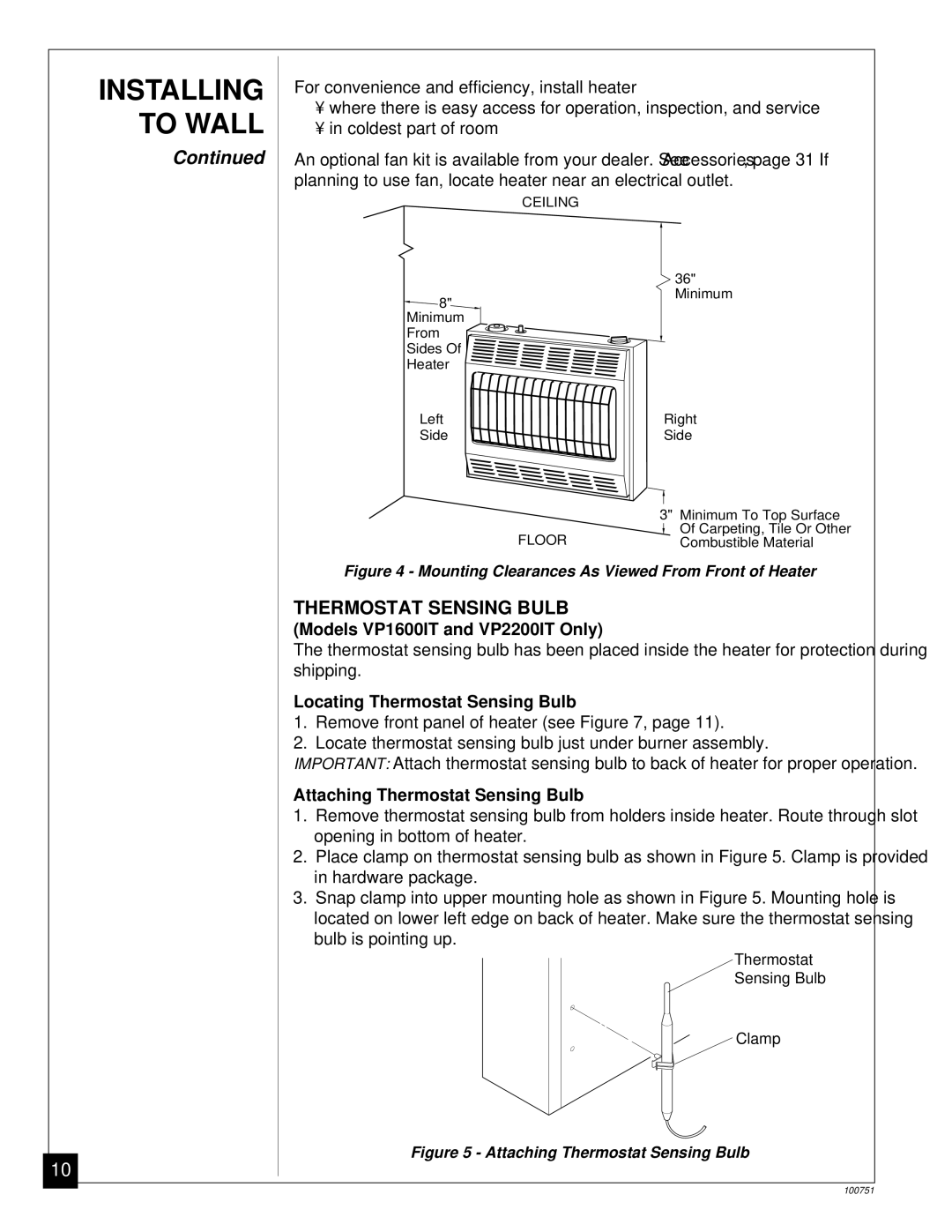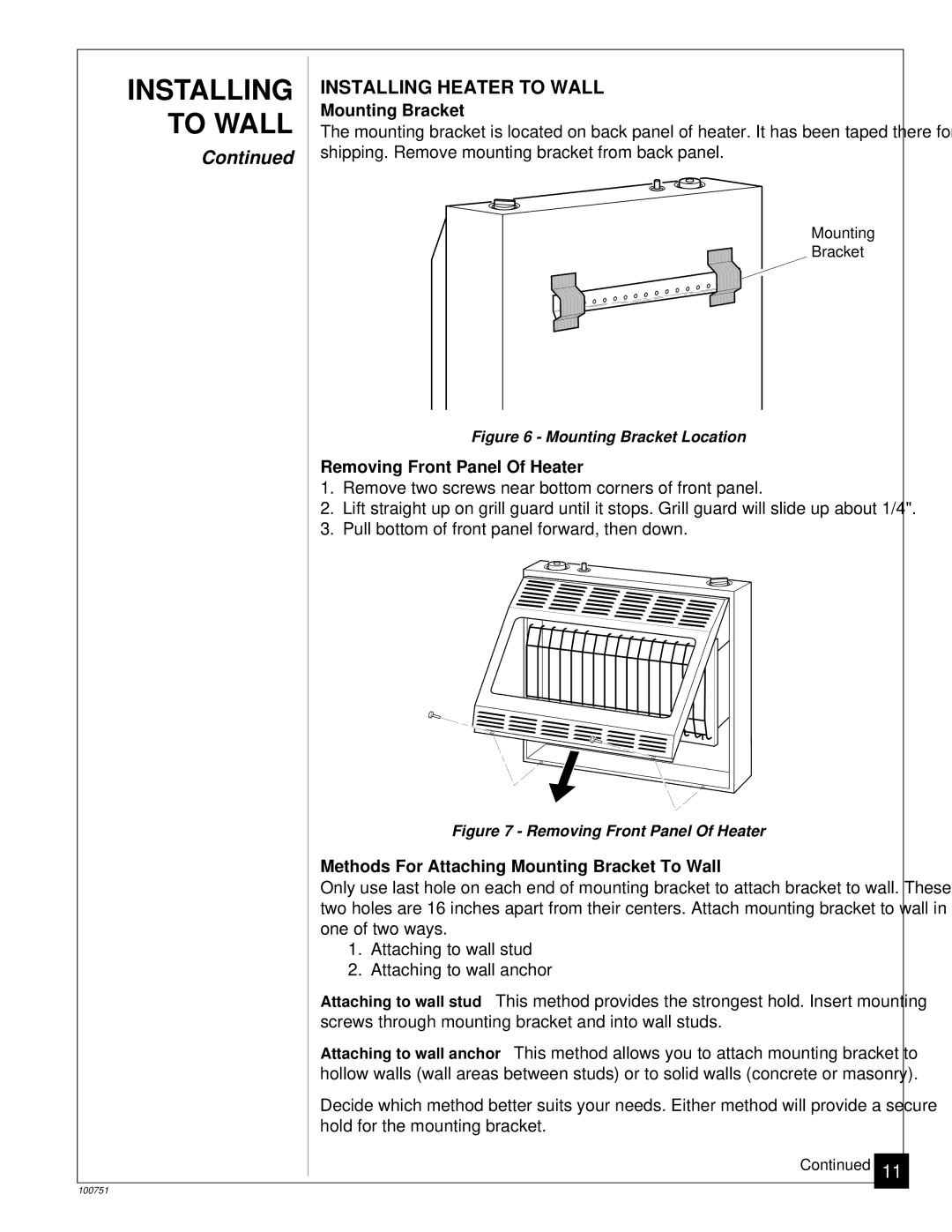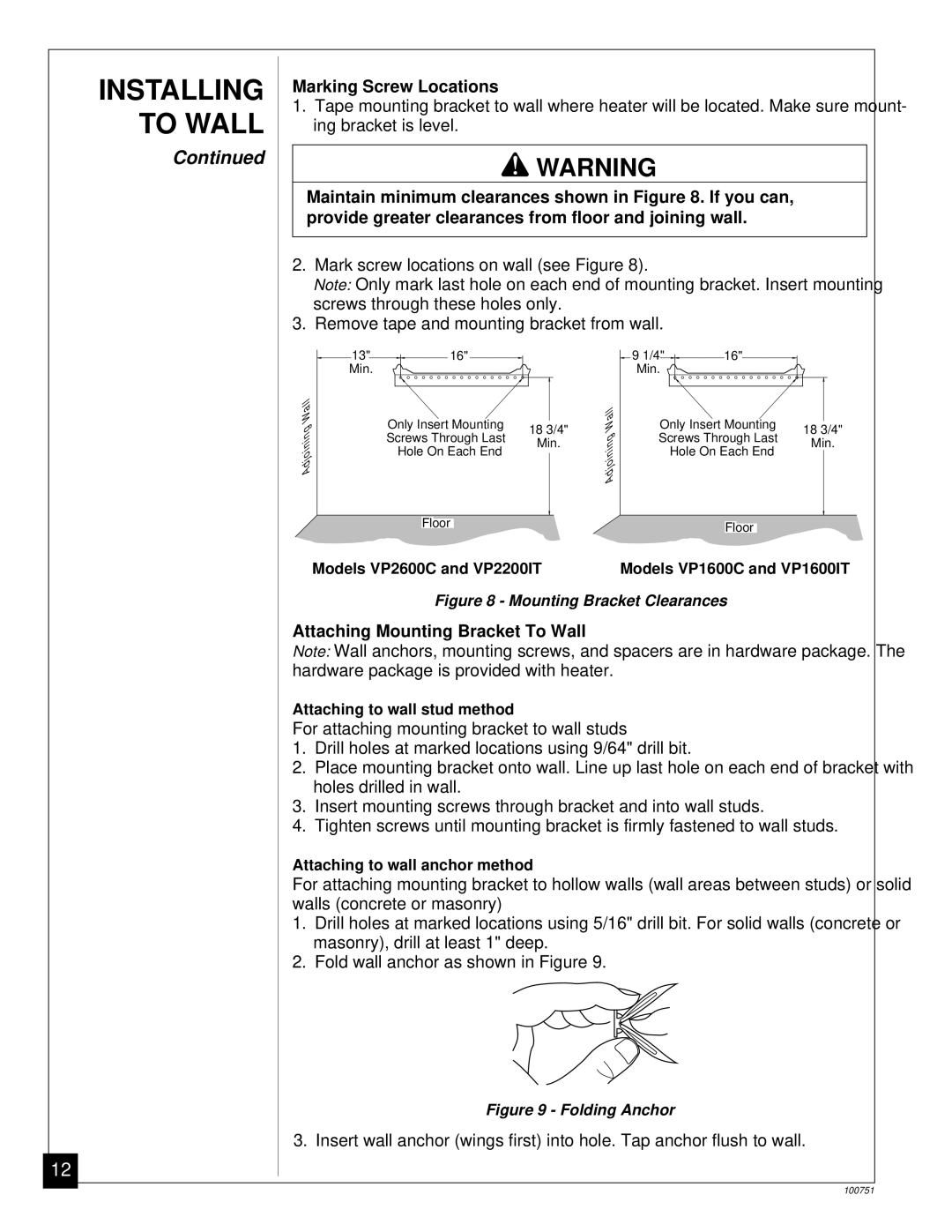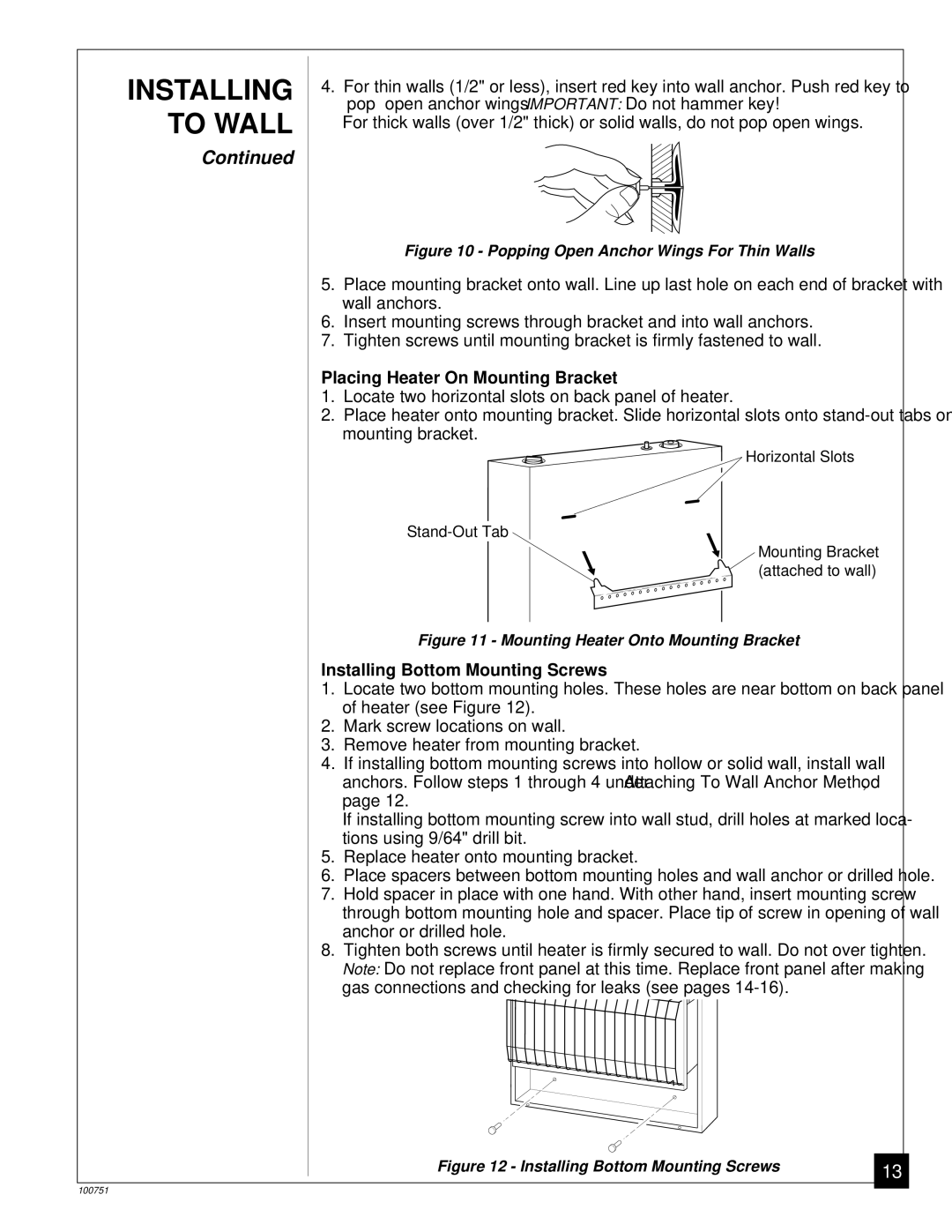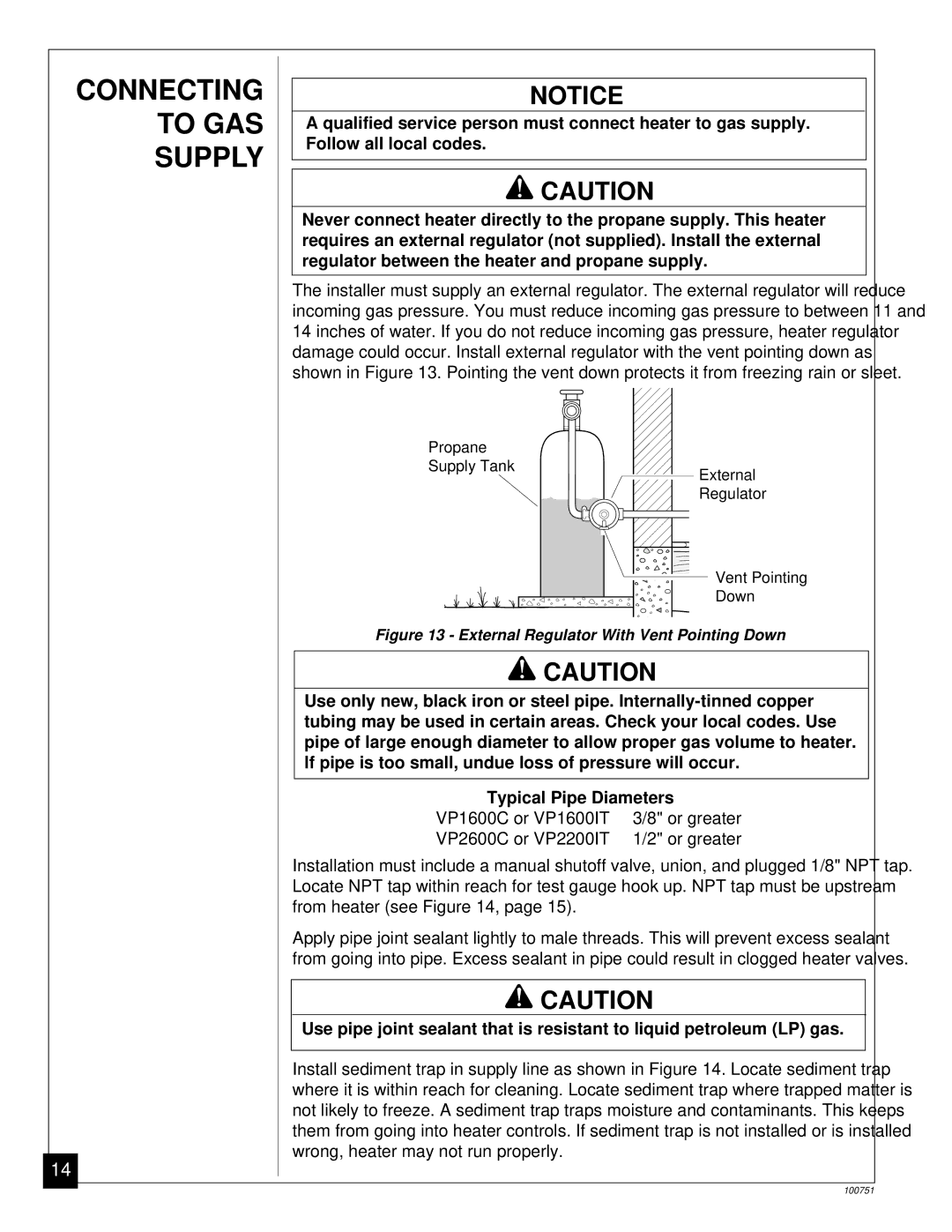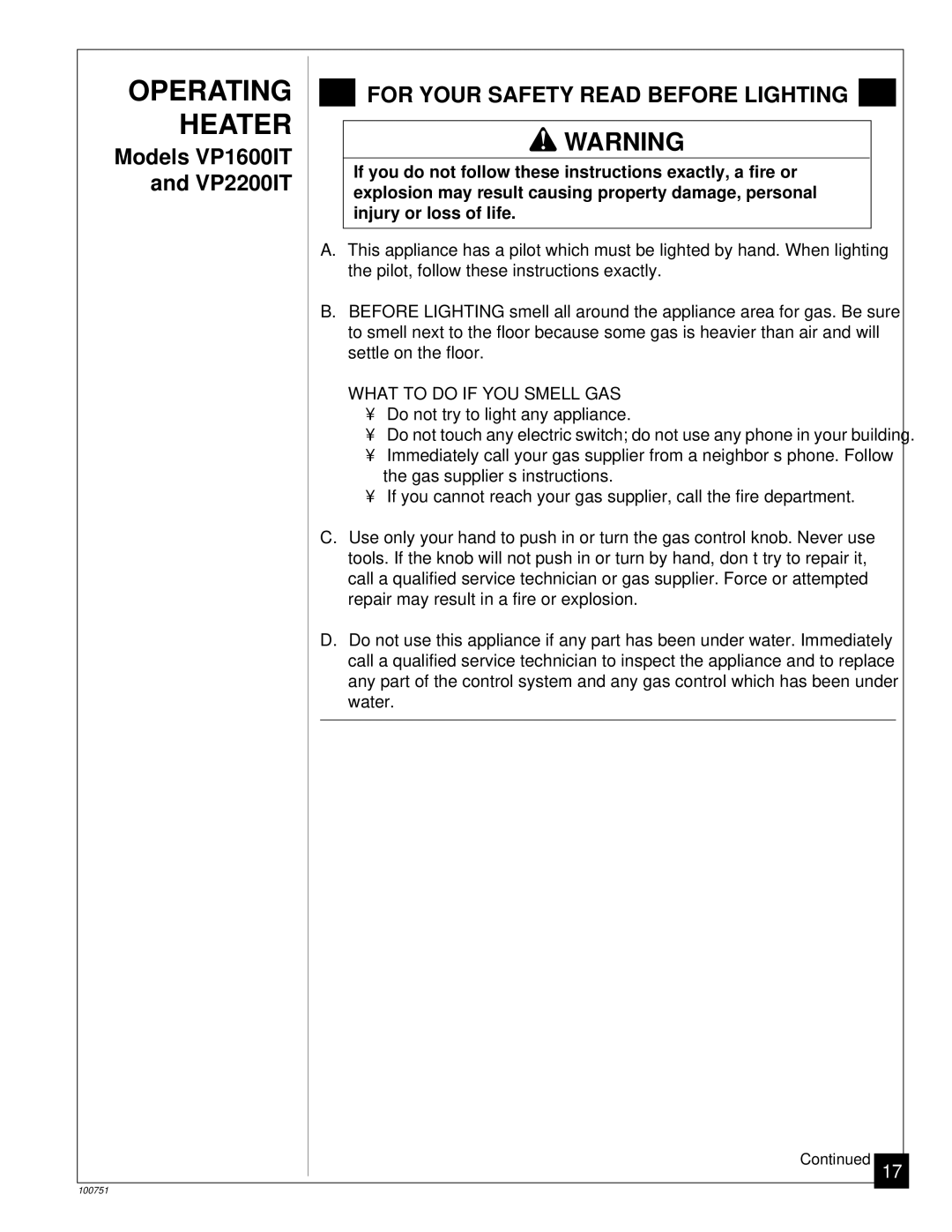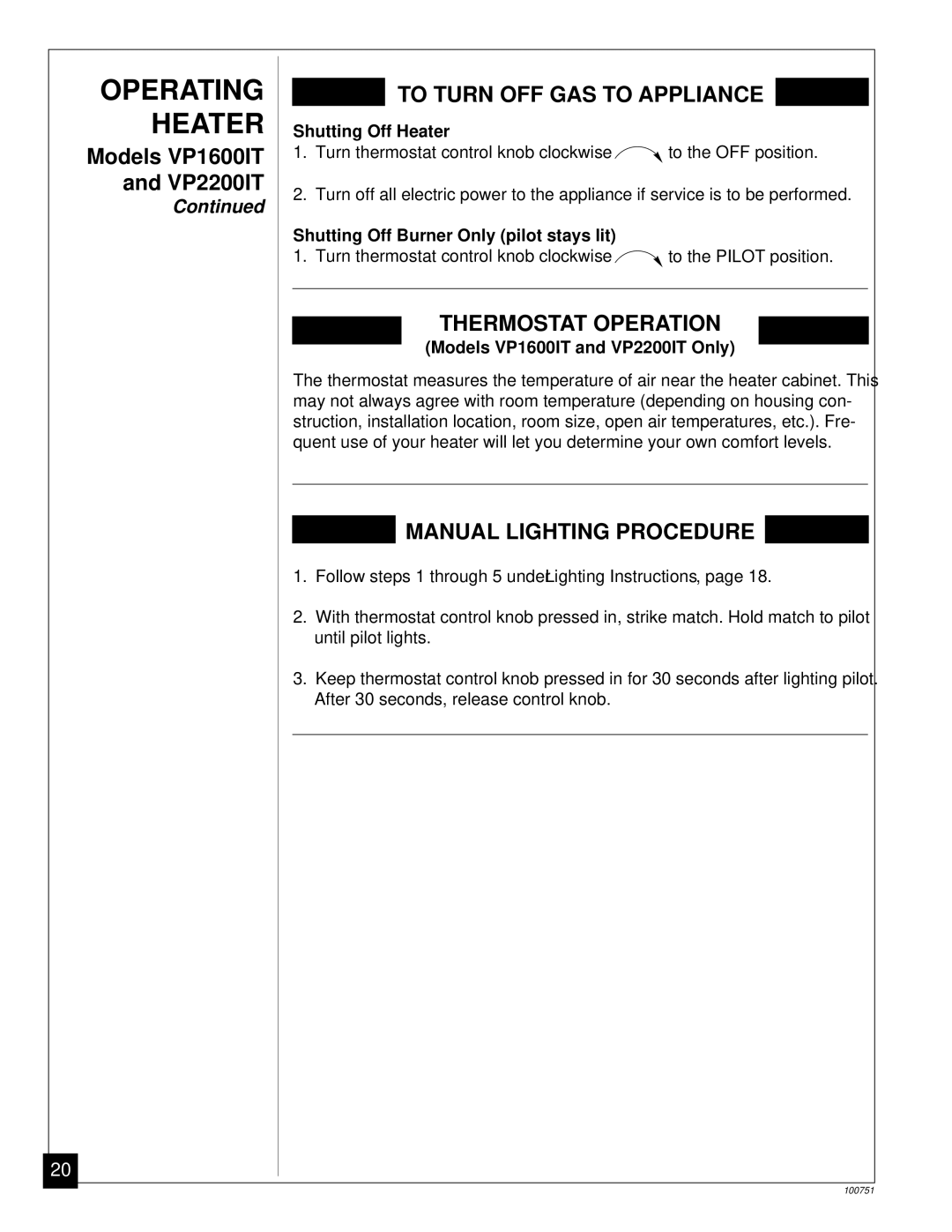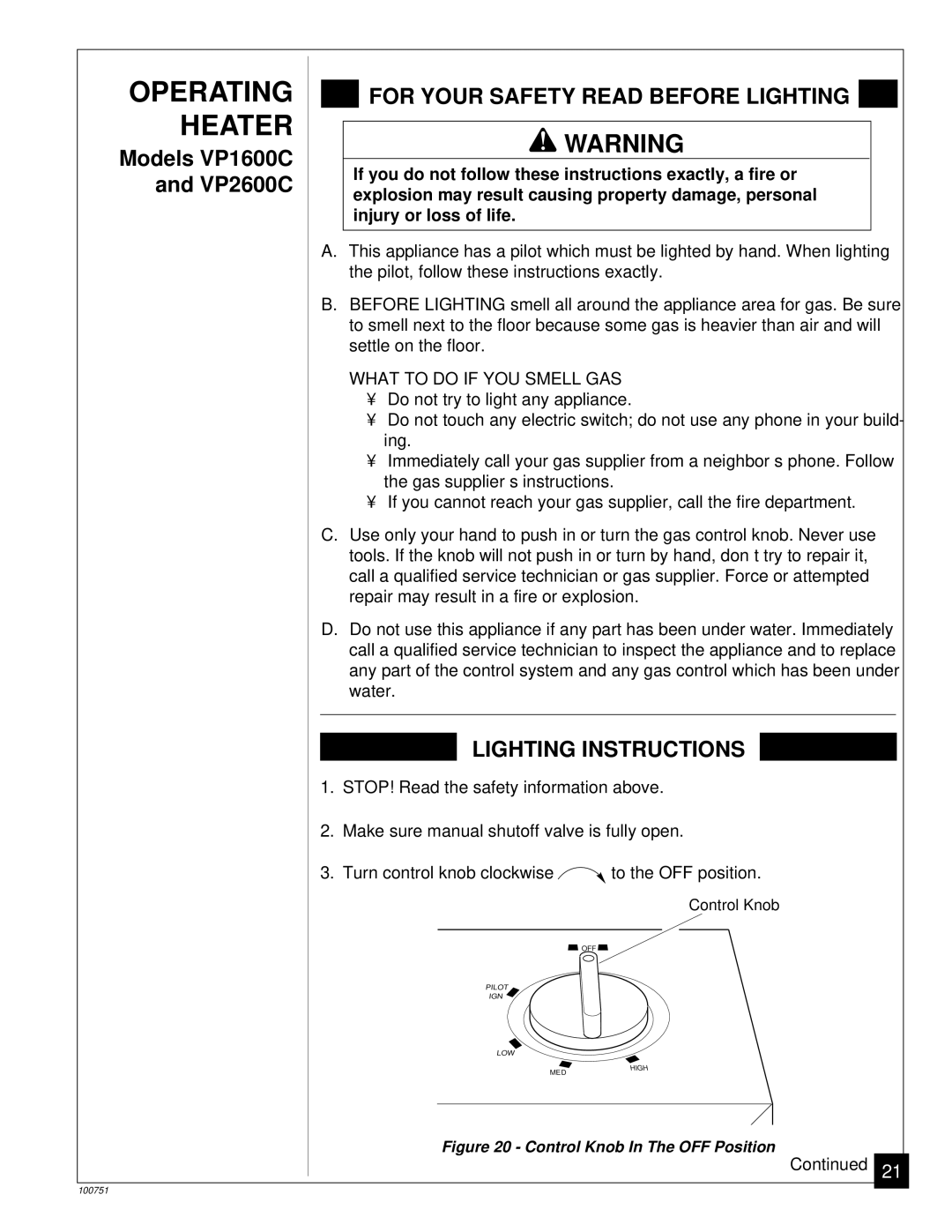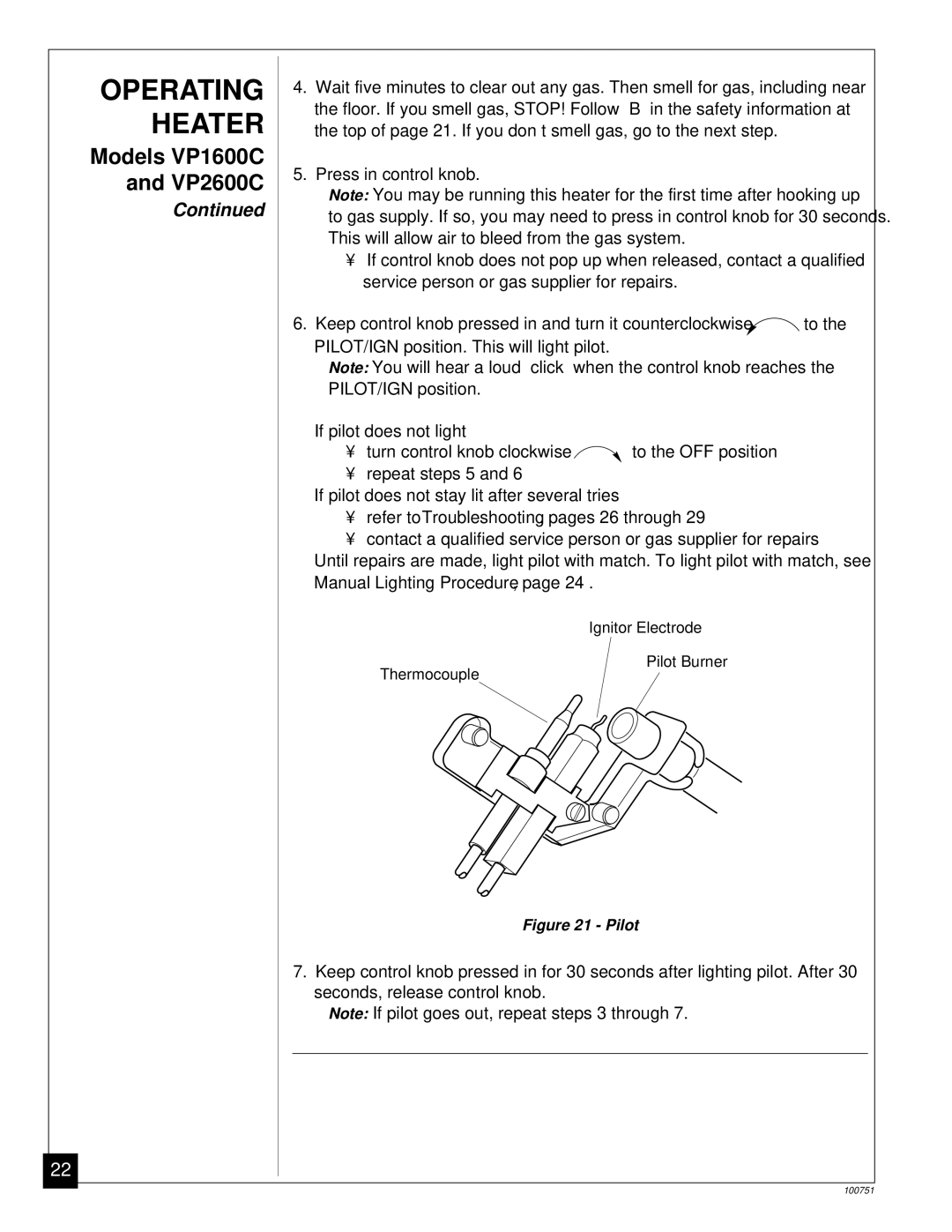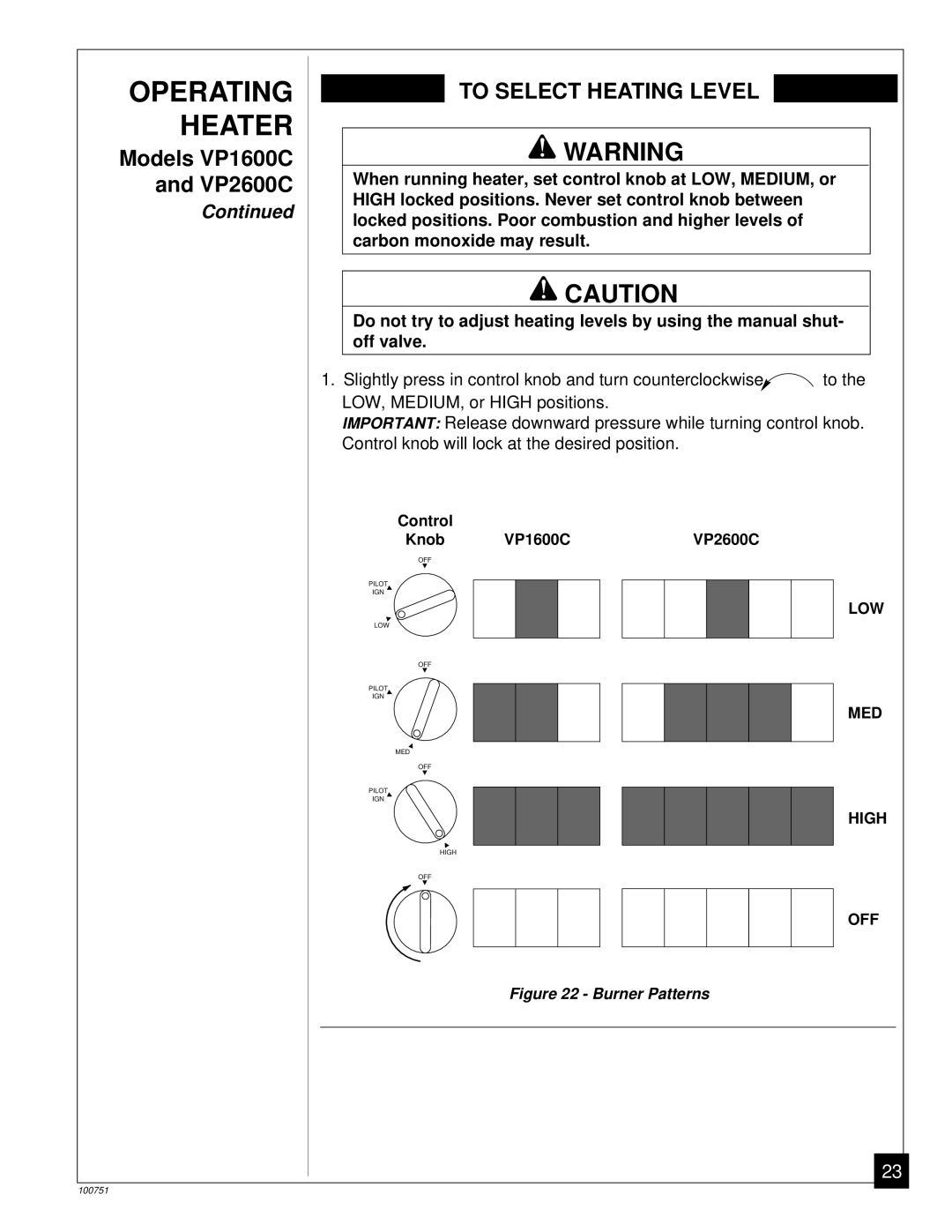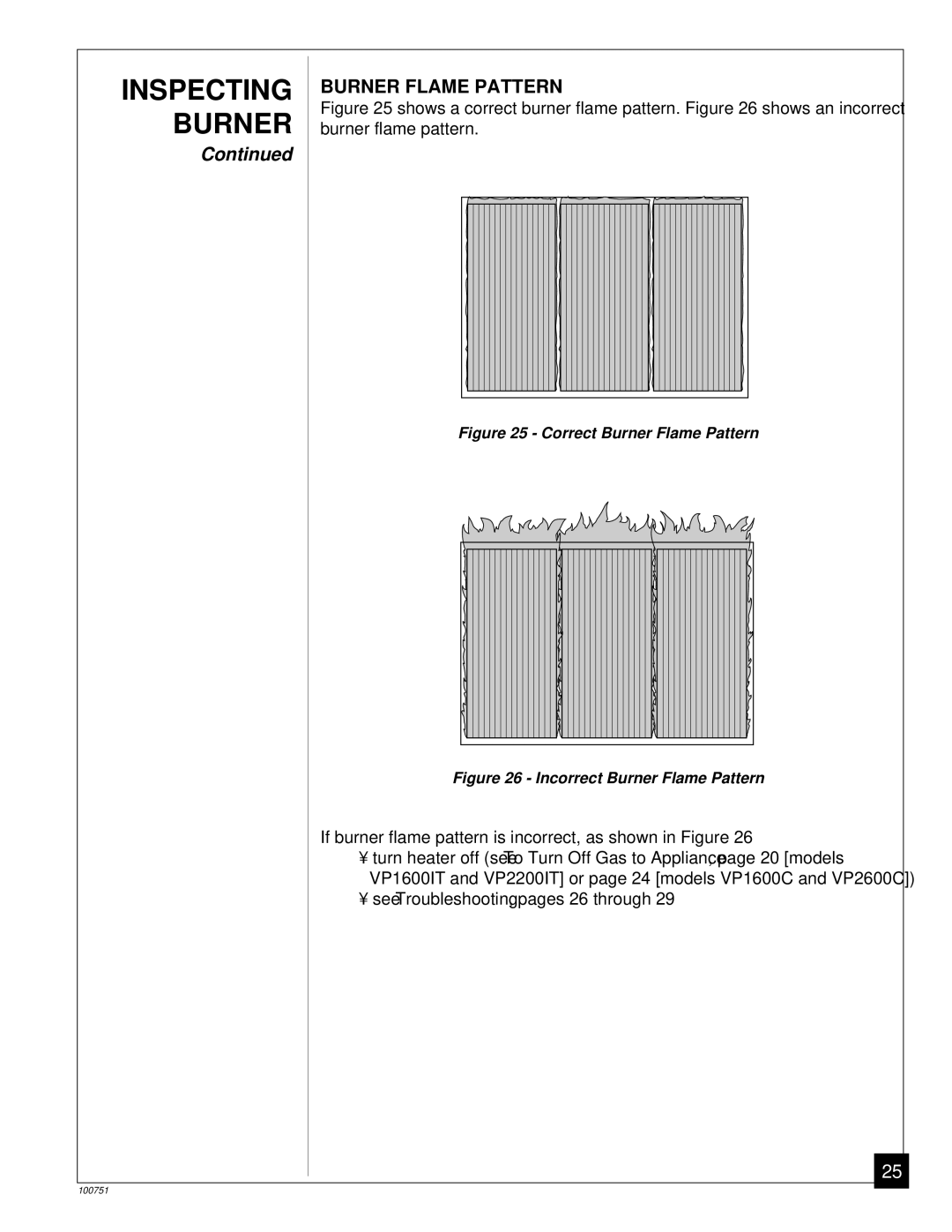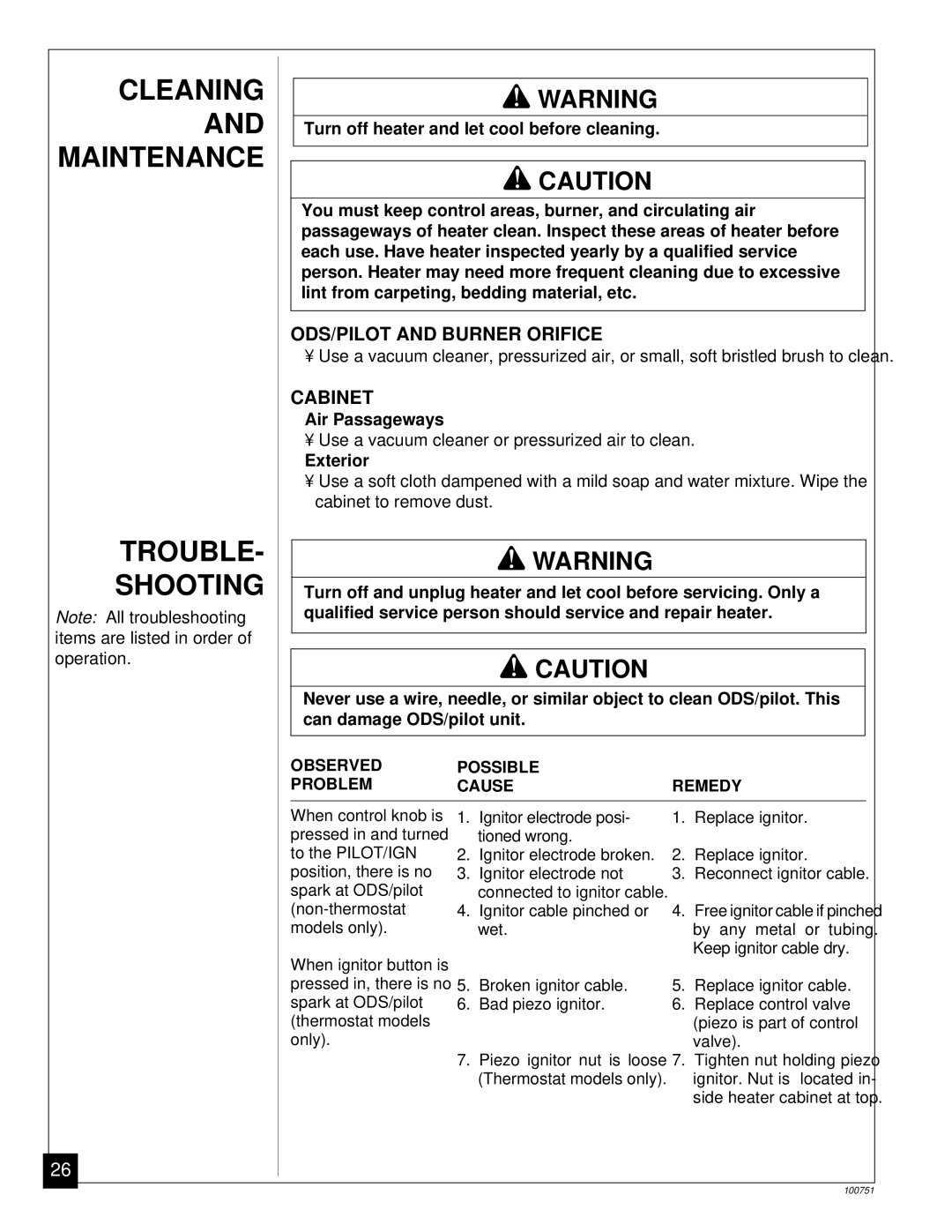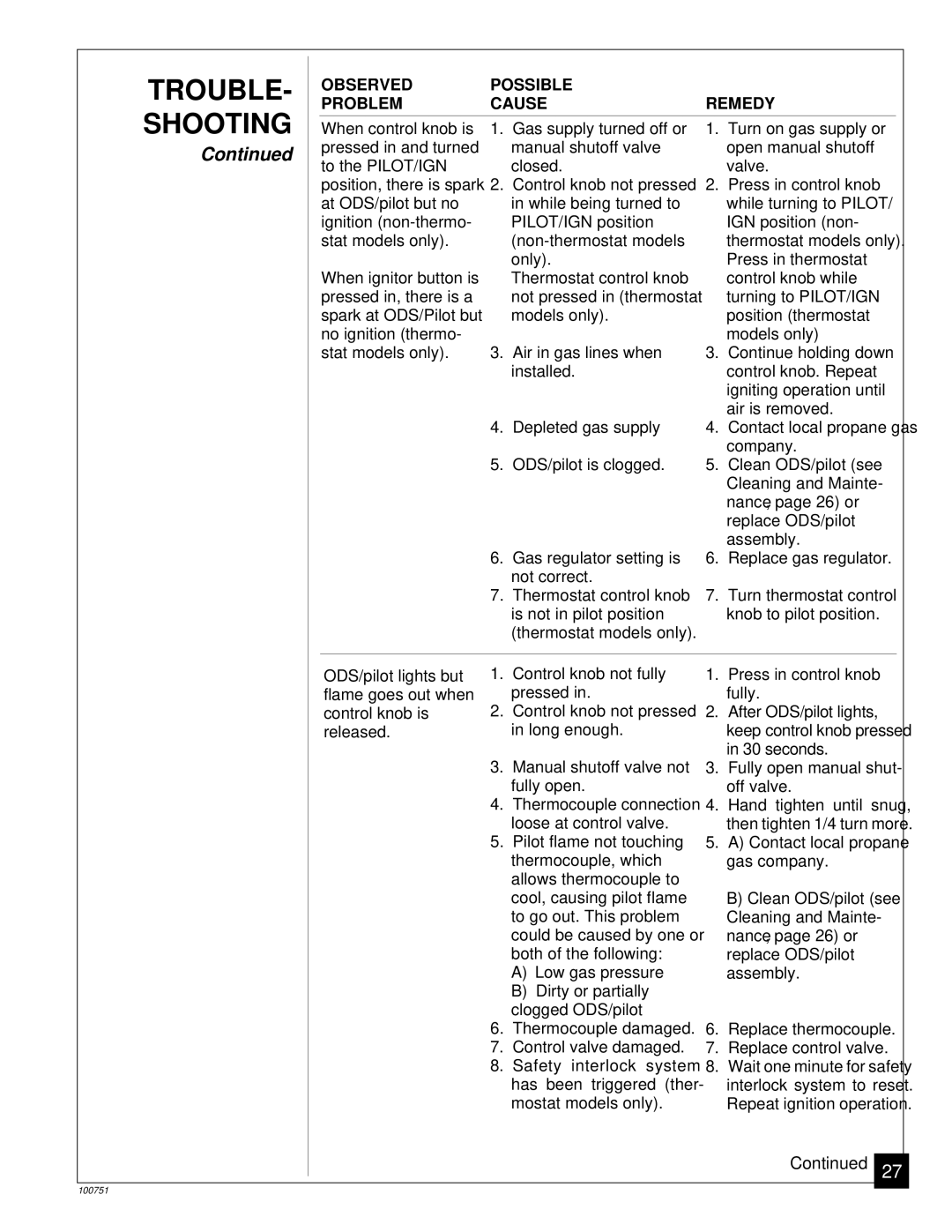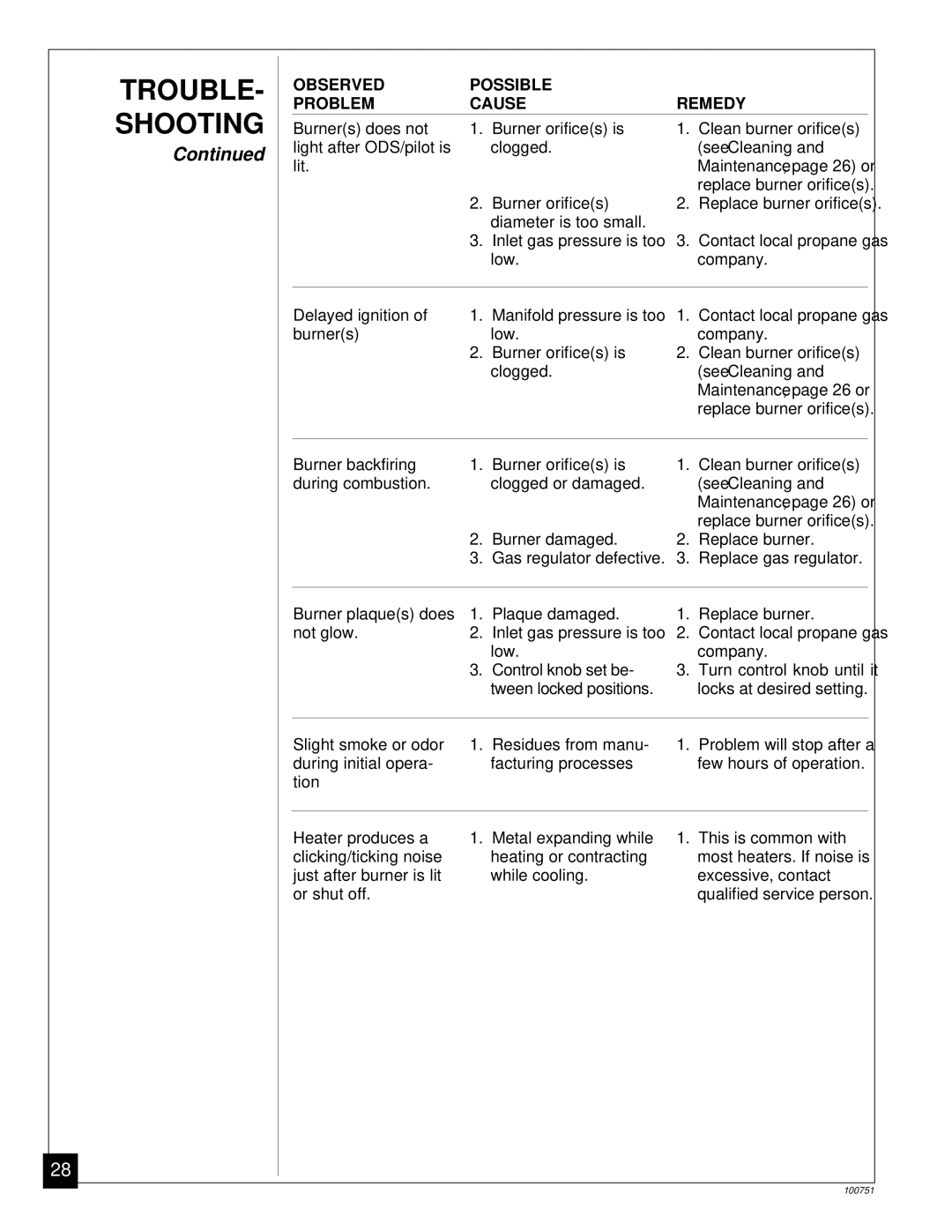
FRESH AIR |
|
|
|
|
|
|
|
|
|
|
|
|
|
|
|
| |
| WARNING ICONG 001WARNING |
|
|
|
|
|
| |
FOR |
| This heater must have fresh air for proper operation. If not, poor |
|
|
| |||
COMBUSTION |
| fuel combustion could result. Read the following instructions to |
|
|
| |||
| insure proper fresh air for this and other |
|
|
| ||||
AND |
|
|
|
| ||||
| in your home. |
|
|
|
|
|
| |
VENTILATION |
|
|
|
|
| |||
| Today’s homes are built more energy efficient than ever. New materials, increased |
| ||||||
|
| insulation, and new construction methods help reduce heat loss in homes. Home |
|
|
| |||
|
| owners weather strip and caulk around windows and doors to keep the cold air out |
| |||||
|
| and the warm air in. During heating months, home owners want their homes as |
|
|
| |||
|
| airtight as possible. |
|
|
|
|
|
|
|
| While it is good to make your home energy efficient, your home needs to breathe. |
|
|
| |||
|
| Fresh air must enter your home. All |
|
|
| |||
|
| proper combustion and ventilation. |
|
|
|
|
|
|
|
| Exhaust fans, fireplaces, clothes dryers, and fuel burning appliances draw air from |
| |||||
|
| the house to operate. You must provide adequate fresh air for these appliances. |
|
|
| |||
|
| This will insure proper venting of vented |
|
|
|
|
|
|
|
| PRODUCING ADEQUATE VENTILATION |
|
|
|
|
|
|
|
| All spaces in homes fall into one of the three following ventilation classifications: |
|
|
| |||
|
| 1. Unusually Tight Contruction; 2. Unconfined Space; 3. Confined Space. |
|
|
| |||
|
| The information on pages 5 through 8 will help you classify your space and provide |
| |||||
|
| adequate ventilation. |
|
|
|
|
|
|
|
| Unusually Tight Construction |
|
|
|
|
|
|
|
| The air that leaks around doors and windows may provide enough fresh air for |
|
|
| |||
|
| combustion and ventilation. However, in buildings of unusually tight construction, |
| |||||
|
| you must provide additional fresh air. |
|
|
|
|
|
|
|
| Unusually tight construction is defined as construction where: |
|
|
| |||
|
| a. walls and ceilings exposed to the outside atmosphere have a continu- |
|
|
| |||
|
| ous water vapor retarder with a rating of one perm or less with open- |
|
|
| |||
|
| ings gasketed or sealed and |
|
|
|
|
|
|
|
| b. weather stripping has been added on openable windows and doors and |
|
|
| |||
|
| c. caulking or sealants are applied to areas such as joints around window |
|
|
| |||
|
| and door frames, between sole plates and floors, between |
|
|
| |||
|
| joints, between wall panels, at penetrations for plumbing, electrical, and |
|
|
| |||
|
| gas lines, and at other openings. |
|
|
|
|
|
|
|
| If your home meets all of the three criteria above, you must provide addi- |
|
|
| |||
|
| tional fresh air. See Ventilation Air From Outdoors, page 8. |
|
|
|
|
|
|
|
| If your home does not meet all of the three criteria above, continue reading. |
|
|
| |||
|
| Unconfined Space |
|
|
|
|
|
|
|
| An unconfined space has a minimum air volume of 50 cubic feet for each 1000 |
|
|
| |||
|
| BTU/Hr input rating of all appliances in the space (cubic feet equals length x |
|
|
| |||
|
| width x height of space). Include adjoining rooms only if there are doorless |
|
|
| |||
|
| passageways or ventilation grills between the rooms. |
|
|
|
|
|
|
|
| Confined Space |
|
|
|
|
|
|
|
| A confined space has an air volume of less than 50 cubic feet for each 1000 |
|
|
| |||
|
| BTU/Hr input rating of all appliances in the space (cubic feet equals length x |
|
|
| |||
|
| width x height of space). Include adjoining rooms only if there are doorless |
|
|
| |||
|
| passageways or ventilation grills between the rooms. |
|
|
|
|
|
|
| Continued | 5 |
|
| ||||
|
|
|
|
| ||||
|
|
|
|
|
| |||
100751
